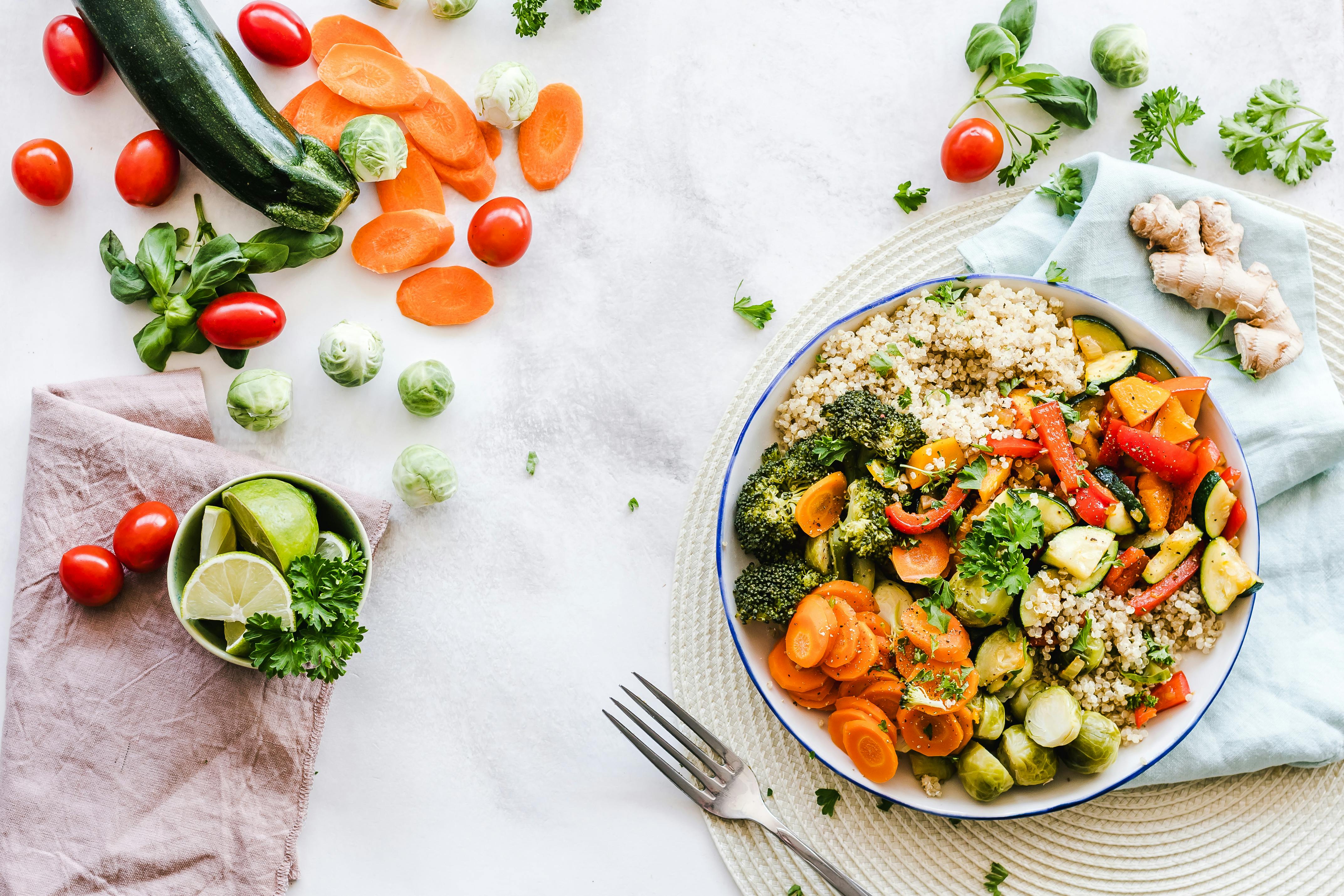As a professional travel blogger, I often share tips for maintaining well-being on the go. Today, we’re tackling a common challenge many women face: premenstrual syndrome (PMS) cravings. These intense urges for specific foods, often high in sugar, salt, or fat, can feel overwhelming and derail healthy eating habits. You’re not alone; studies suggest that up to 90% of women experience some form of PMS, with cravings being a prominent symptom for many.
This comprehensive guide will equip you with five real, evidence-based strategies to manage and reduce those powerful pre-period food urges. We’ll delve into the science behind these cravings and provide practical, actionable advice you can implement starting today. Get ready to reclaim control over your plate and feel better throughout your cycle!
Understanding the ‘Why’ Behind PMS Cravings
Before we dive into solutions, it’s crucial to understand why PMS cravings occur. They aren’t just a lack of willpower; they are rooted in complex physiological changes happening within your body during the luteal phase of your menstrual cycle.

Hormonal Fluctuations
The primary culprits are the fluctuating levels of estrogen and progesterone. After ovulation, estrogen levels drop while progesterone levels rise. This hormonal shift can impact various bodily functions, including appetite regulation and mood.
Specifically, the drop in estrogen can lead to a decrease in serotonin, a neurotransmitter that plays a key role in mood, appetite, and sleep. When serotonin levels are low, your body might instinctively crave carbohydrates, which can temporarily boost serotonin production.
Neurotransmitter Changes
Beyond serotonin, other neurotransmitters like dopamine, associated with pleasure and reward, can also be affected. The desire for high-sugar or high-fat foods often stems from their ability to trigger a dopamine release, providing a temporary sense of comfort or pleasure to counteract feelings of irritability or sadness common during PMS.
Fueling Your Body Right: Nutritional Strategies
One of the most effective ways to combat PMS cravings is through strategic nutrition. What you eat can significantly impact your hormone balance and mood stability.

Complex Carbohydrates & Protein
Instead of reaching for simple sugars, opt for complex carbohydrates like whole grains, legumes, and starchy vegetables. These provide a steady release of glucose, preventing blood sugar spikes and crashes that can intensify cravings.
Pairing complex carbs with lean protein sources (chicken, fish, tofu, beans) further stabilizes blood sugar and promotes satiety. Protein helps slow down digestion, keeping you feeling fuller for longer and reducing the urge to snack.
Tip: Aim for balanced meals and snacks throughout the day. This consistent nutrient intake can help regulate blood sugar and prevent extreme hunger that often leads to impulsive eating.
Magnesium & B Vitamins
Certain micronutrients play a vital role in managing PMS symptoms. Magnesium, found in leafy greens, nuts, seeds, and dark chocolate, can help reduce anxiety, irritability, and even fluid retention associated with PMS. B vitamins, particularly B6, are crucial for neurotransmitter synthesis, including serotonin.
Incorporating foods rich in these nutrients, such as salmon, chicken, bananas, and spinach, can support your body’s natural processes and potentially alleviate craving intensity.
Mindful Eating & Emotional Regulation
Often, PMS cravings are not just about physical hunger but also about emotional needs. Learning to differentiate between true hunger and emotional eating is a powerful tool.

Practice Mindful Eating
Mindful eating involves paying full attention to your food, from its smell and texture to how it makes you feel. Before reaching for a snack, pause and ask yourself: “Am I truly hungry, or am I feeling stressed, bored, or sad?”
When you do eat, do so slowly, savoring each bite. This allows your body to register fullness signals more effectively, preventing overeating. It also helps you appreciate the food, making the experience more satisfying.
Identify Emotional Triggers
Keep a journal during your premenstrual phase to track your mood and cravings. Note down what you’re craving, when, and what emotions you’re experiencing. Over time, you might identify patterns, such as craving chocolate every time you feel overwhelmed.
Once you identify triggers, you can develop alternative coping mechanisms. Instead of food, try a warm bath, a short walk, listening to music, or calling a friend. This shift from food-based comfort to healthier emotional regulation is key.
“The best way to predict the future is to create it. By understanding your body’s signals and proactively addressing them, you empower yourself to navigate PMS with greater ease and control.”
Lifestyle Adjustments for Hormonal Balance
Beyond diet, your daily habits significantly influence your hormonal balance and overall well-being, directly impacting PMS symptoms and cravings.
Prioritize Sleep
Lack of sleep can wreak havoc on your hormones, particularly those that regulate appetite, like ghrelin and leptin. When you’re sleep-deprived, ghrelin (the hunger hormone) increases, and leptin (the satiety hormone) decreases, making you feel hungrier and less satisfied.
Aim for 7-9 hours of quality sleep per night, especially in the week leading up to your period. Establishing a consistent sleep schedule can help regulate your body’s natural rhythms and reduce hormonal fluctuations that contribute to cravings.
Regular Physical Activity
Exercise is a natural mood booster and stress reliever. Physical activity releases endorphins, which have pain-relieving and mood-elevating effects, naturally combating the low mood and irritability often associated with PMS.
Even moderate exercise, like a brisk walk, yoga, or cycling, can make a significant difference. Regular movement also helps improve blood circulation and can reduce bloating, making you feel more comfortable overall.
Hydration and Herbal Support
Sometimes, what feels like a craving is actually a sign of dehydration. Additionally, certain natural remedies can offer complementary support.
The Power of Water
Dehydration can often be mistaken for hunger or cravings. Before reaching for a snack, try drinking a large glass of water. Wait 15-20 minutes to see if the craving subsides. Staying well-hydrated throughout the day can also help reduce bloating and improve overall energy levels.
Infused water with fruits or herbs can make hydration more appealing if plain water isn’t your favorite.
Exploring Herbal Remedies
While not a substitute for medical advice, some herbal remedies have been traditionally used to alleviate PMS symptoms. Chasteberry (Vitex agnus-castus), for example, is often studied for its potential to balance hormones and reduce symptoms like breast tenderness, mood swings, and cravings. This resource from the National Center for Complementary and Integrative Health provides detailed information on Chasteberry.
Always consult with a healthcare professional before starting any new supplements or herbal remedies, especially if you have underlying health conditions or are taking other medications.
Healthier Alternatives to Common Cravings
| Craving Type | Common Foods | Healthier Alternatives |
|---|---|---|
| Sweet | Chocolate, Candy, Pastries | Fruits (berries, bananas), Dark Chocolate (70%+), Dates, Greek Yogurt with honey |
| Salty | Chips, Pretzels, Processed Snacks | Nuts, Seeds, Air-popped Popcorn, Roasted Chickpeas, Edamame |
| Fatty | Fried Foods, Pizza, Ice Cream | Avocado, Olives, Fatty Fish (salmon), Nut Butters, Chia Seeds |
Conclusion: Empowering Your Cycle
PMS cravings are a real and often challenging aspect of the menstrual cycle for many women. However, by understanding their underlying causes and implementing these five proven strategies, you can significantly reduce their intensity and impact.
Remember, it’s about progress, not perfection. Start by incorporating one or two tips into your routine and gradually build from there. Listen to your body, be patient with yourself, and celebrate every small victory.
For more in-depth information on managing PMS symptoms, consider exploring resources like this comprehensive guide on PMS from the Mayo Clinic, which offers detailed insights into symptoms, causes, and various management strategies. Additionally, the American College of Obstetricians and Gynecologists (ACOG) provides valuable FAQs on PMS, offering expert perspectives on diagnosis and treatment options.
What’s your go-to strategy for managing PMS cravings? Share your tips and experiences in the comments below – your insights could help another woman on her journey to better well-being!
